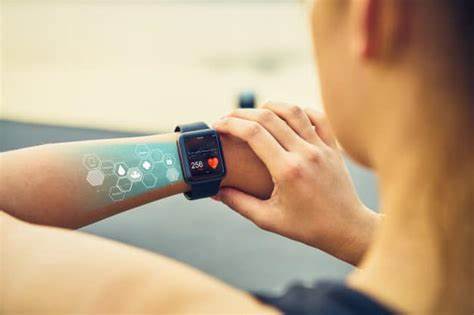Designing an app for wearables and smart devices presents unique challenges and opportunities. These devices have different interfaces, user contexts, and functionalities compared to traditional smartphones or tablets. Here’s a comprehensive guide to help you design an effective app for wearables and smart devices:

Table of Contents
Toggle1. Understand the Device Capabilities
Research Device Specifications
Familiarize yourself with the hardware capabilities of the wearables or smart devices you’re targeting. Consider factors such as:
- Screen size and resolution
- Input methods (touch, voice, gestures)
- Sensors available (heart rate monitor, GPS, accelerometer)
- Connectivity options (Bluetooth, Wi-Fi)
Know the Operating Systems
Different wearables may run on various operating systems (e.g., watchOS for Apple Watch, Wear OS for Android, Tizen for Samsung devices). Understand the guidelines and capabilities of each platform.
2. Identify the Target Audience and Use Cases
Define User Personas
Identify the primary users of your app. Consider factors like age, tech-savviness, and specific needs. For example, fitness enthusiasts may require different features than users seeking health monitoring.
Establish Use Cases
Determine how users will interact with your app. Common use cases for wearables include:
- Fitness tracking (steps, workouts)
- Health monitoring (heart rate, sleep)
- Notifications (messages, calls)
- Quick access to information (weather, calendar)
3. Focus on User Experience (UX)
Prioritize Simplicity
Wearable screens are small, so prioritize a clean and straightforward design. Focus on essential features and information to avoid overwhelming users.
Limit Interactions
Reduce the number of steps needed to perform actions. Use simple gestures and voice commands to enhance accessibility. For instance, single taps or swipes can streamline navigation.
Contextual Awareness
Design your app to respond to the user’s context. For example, if the user is exercising, the app might prioritize fitness metrics and notifications while minimizing distractions.
4. Design for Readability and Accessibility
Optimize Text Size and Clarity
Ensure that text is legible on small screens. Use larger font sizes and high-contrast colors to improve readability.
Visual Hierarchy
Create a clear visual hierarchy to guide users’ attention to essential information. Use size, color, and positioning to emphasize key elements.
Accessibility Features
Incorporate accessibility options, such as voice commands or haptic feedback, to accommodate users with disabilities or those in different environments.
5. Leverage Device Features and Sensors
Utilize Sensors
Incorporate relevant sensors to enhance functionality. For example, a fitness app could use a heart rate monitor to provide real-time feedback during workouts.
Notifications and Alerts
Design notifications to be brief and actionable. Use vibrations or sounds to alert users, ensuring that important information is communicated effectively without being disruptive.
Data Integration
Integrate with existing health and fitness platforms (e.g., Apple Health, Google Fit) to enrich your app’s functionality and provide users with a comprehensive overview of their data.
6. Prototype and Test
Create Wireframes and Prototypes
Develop wireframes and interactive prototypes to visualize your app’s layout and functionality. Tools like Figma, Sketch, or Adobe XD can help in creating prototypes.
Conduct Usability Testing
Gather feedback from real users by conducting usability testing. Observe how users interact with your app and identify any pain points or areas for improvement.
Iterate Based on Feedback
Refine your app design based on user feedback and testing results. Iterative design is crucial in creating a user-friendly experience.
7. Focus on Performance and Battery Efficiency
Optimize for Performance
Wearables often have limited processing power, so ensure that your app runs smoothly without lag. Optimize graphics and animations to improve performance.
Minimize Battery Usage
Design your app to be battery-efficient. Limit background activity and use efficient coding practices to conserve battery life.
8. Consider Connectivity and Data Syncing
Data Syncing
Ensure that your app can sync data effectively with other devices (like smartphones) to provide users with a seamless experience. Consider using APIs for data exchange.
Offline Functionality
If applicable, design your app to function offline and sync data when connectivity is restored. This can enhance user experience in areas with limited connectivity.
9. Stay Updated with Design Trends and Guidelines
Follow Platform Guidelines
Adhere to the design guidelines provided by the wearable platforms (e.g., Material Design for Wear OS, Human Interface Guidelines for watchOS) to ensure consistency and usability.
Stay Informed
Keep up with the latest design trends and best practices in wearable app development. This can help you create a modern and relevant user experience.
Conclusion
Designing an app for wearables and smart devices requires a user-centered approach that prioritizes simplicity, context awareness, and performance. By understanding the unique characteristics of these devices and focusing on the needs of your target audience, you can create an effective app that enhances user experience and engagement. Remember to iterate based on user feedback and stay informed about industry trends to ensure your app remains relevant and valuable.


No responses yet